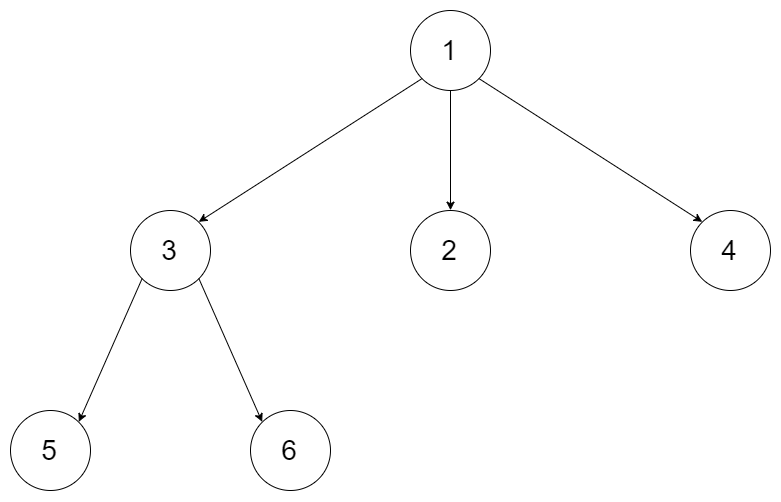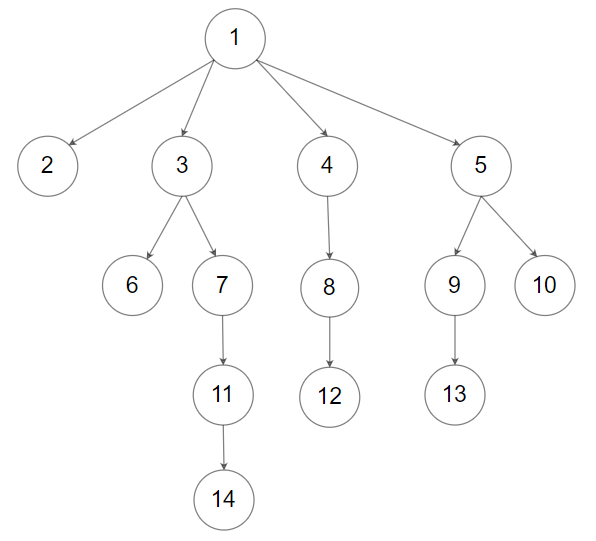| comments | difficulty | edit_url | tags | |||
|---|---|---|---|---|---|---|
true |
Easy |
|
Given a n-ary tree, find its maximum depth.
The maximum depth is the number of nodes along the longest path from the root node down to the farthest leaf node.
Nary-Tree input serialization is represented in their level order traversal, each group of children is separated by the null value (See examples).
Example 1:
Input: root = [1,null,3,2,4,null,5,6] Output: 3
Example 2:
Input: root = [1,null,2,3,4,5,null,null,6,7,null,8,null,9,10,null,null,11,null,12,null,13,null,null,14] Output: 5
Constraints:
- The total number of nodes is in the range
[0, 104]. - The depth of the n-ary tree is less than or equal to
1000.
"""
# Definition for a Node.
class Node:
def __init__(self, val=None, children=None):
self.val = val
self.children = children
"""
class Solution:
def maxDepth(self, root: 'Node') -> int:
if root is None:
return 0
return 1 + max([self.maxDepth(child) for child in root.children], default=0)/*
// Definition for a Node.
class Node {
public int val;
public List<Node> children;
public Node() {}
public Node(int _val) {
val = _val;
}
public Node(int _val, List<Node> _children) {
val = _val;
children = _children;
}
};
*/
class Solution {
public int maxDepth(Node root) {
if (root == null) {
return 0;
}
int ans = 1;
for (Node child : root.children) {
ans = Math.max(ans, 1 + maxDepth(child));
}
return ans;
}
}/*
// Definition for a Node.
class Node {
public:
int val;
vector<Node*> children;
Node() {}
Node(int _val) {
val = _val;
}
Node(int _val, vector<Node*> _children) {
val = _val;
children = _children;
}
};
*/
class Solution {
public:
int maxDepth(Node* root) {
if (!root) return 0;
int ans = 1;
for (auto& child : root->children) ans = max(ans, 1 + maxDepth(child));
return ans;
}
};/**
* Definition for a Node.
* type Node struct {
* Val int
* Children []*Node
* }
*/
func maxDepth(root *Node) int {
if root == nil {
return 0
}
ans := 1
for _, child := range root.Children {
ans = max(ans, 1+maxDepth(child))
}
return ans
}
